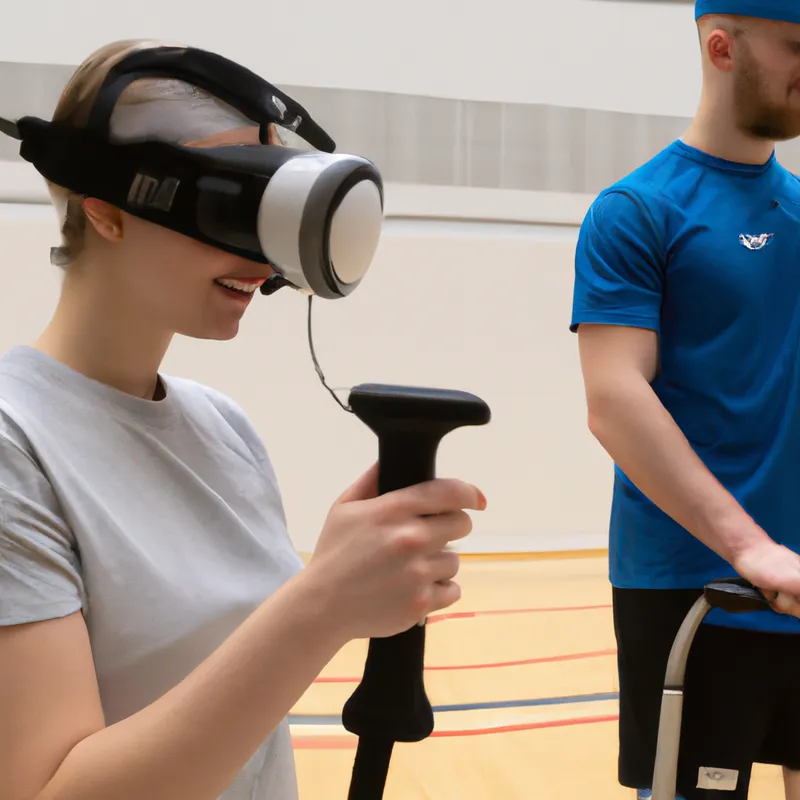Elevate Performance: VR’s Role in Athlete Development
Exploring the Use of Virtual Reality in Training Adaptive Athletes
Virtual reality (VR) has transformed sports training. Adaptive athletes, facing physical or cognitive challenges, benefit significantly from VR technology. This innovative approach creates an immersive environment that fosters skill development and boosts confidence. This blog post explores how VR enhances training for adaptive athletes, offering practical tips and benefits.
Understanding Adaptive Athletes
Adaptive athletes face unique challenges in sports. Disabilities may affect their mobility, coordination, or strength. Traditional training methods often fail to meet their specific needs. VR provides tailored experiences, allowing athletes to practice skills in a safe, controlled setting. This technology simulates various scenarios, making it easier for athletes to adapt and improve.
Adaptive athletes include individuals with visual impairments, amputations, cerebral palsy, or other conditions impacting their abilities. Many lack access to the same facilities or resources as able-bodied athletes. VR offers a solution, providing a customizable high-tech training environment.
The Power of Immersive Experiences
VR enables adaptive athletes to engage in immersive experiences that replicate real-life sports situations. They can practice techniques without fearing injury. For example, a wheelchair basketball player can simulate passing or shooting during a game. This practice hones skills while building confidence.
Additionally, VR includes visual and audio cues that enhance training. These cues help athletes focus on specific tasks. A visually impaired runner can navigate a track while receiving audio feedback. This personalized approach supports athletes in excelling.
The immersive nature of VR allows athletes to experience realistic environments, making training more engaging than traditional methods. They can practice in various locations, such as bustling stadiums or serene parks, adapting to different environments without leaving their training space.
Tips for Implementing VR in Training
Adopting VR in training requires careful planning and execution. Here are some tips for success:
1. **Choose the Right Equipment**: Invest in high-quality VR headsets and motion sensors. Select devices that cater to adaptive athletes’ specific needs, ensuring comfort and usability.
2. **Start with Simple Exercises**: Begin with basic drills to build confidence. Gradually introduce complex scenarios as athletes improve. This approach prevents frustration and encourages progress.
3. **Incorporate Feedback Mechanisms**: Use VR programs that offer instant feedback. Feedback helps athletes understand their performance and identify improvement areas. Real-time analysis enhances learning.
Conclusion
Incorporating VR into training empowers adaptive athletes, offering tailored experiences that enhance skills and confidence.
Below are related products based on this post:
FAQ
What are adaptive athletes and how does VR benefit them?
Adaptive athletes are individuals who face physical or cognitive challenges that affect their participation in sports. VR benefits them by providing tailored training experiences in a safe, controlled environment. This technology allows athletes to practice skills without the fear of injury, simulating various scenarios to help them adapt and improve their performance.
What types of challenges do adaptive athletes face in traditional training?
Adaptive athletes often encounter limitations in mobility, coordination, or strength due to their disabilities. Traditional training methods may not adequately address their specific needs, leading to a lack of access to suitable resources or facilities. VR technology offers a customizable training experience, helping them overcome these challenges and enhancing their skill development.
What are some tips for successfully implementing VR in training for adaptive athletes?
To successfully implement VR in training, it’s important to choose high-quality equipment that meets the specific needs of adaptive athletes, start with simple exercises to build confidence, and incorporate feedback mechanisms for real-time performance analysis. These tips ensure a gradual and supportive training process that encourages progress and reduces frustration.















Post Comment